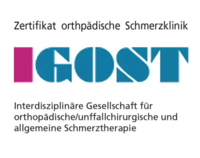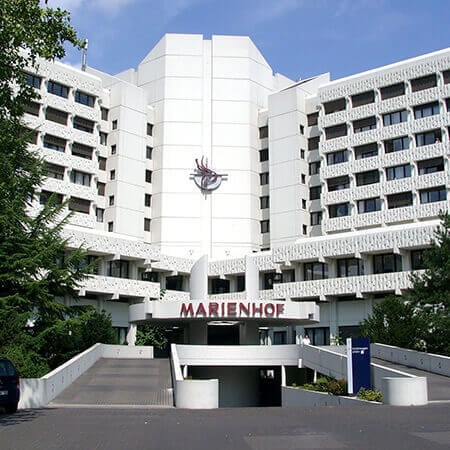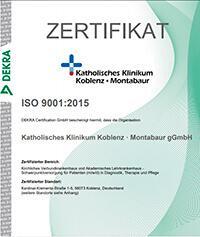Intramedullary Spinal Cord Hematoma — Surgical treatment in the Best Hospitals in the World
Treatment prices are regulated by national law of the corresponding countries, but can also include additional hospital coefficients. In order to receive the individual cost calculation, please send us the request and medical records.

Department of Spinal Surgery
The Department of Spinal Surgery annually treats more than 780 patients with spinal cord hematoma. The specialists completely remove the blood clot and perform endoscopic decompression of the spinal cord. The surgery involves the use of a three-dimensional O-Arm x-ray system that provides additional protection for the spinal cord. The department is headed by Dr. med. A Bitter, who specializes in microsurgical spinal interventions.



Department of Spinal Surgery
The Department of Spinal Surgery at the Vivantes Auguste-Victoria Hospital all diseases of the spine - both conservatively and operatively. Patients with herniated intervertebral discs, displacement of vertebrae, stenosis of the spinal canal or back pain are treated here. In addition, specialists of the department have a unique experience in the field of complex reconstructive and revision surgeries, which are conducted to continue or correct the previous surgical treatment.


Department of Spinal Surgery
The Department of Spinal Surgery offers the full range of effective treatment methods in the area of its specialization. A highly qualified team of doctors is at the service of the department's patients, who have in their arsenal advanced conservative and surgical treatment methods for pathological changes in the spine. Spinal surgical procedures are performed in modern operating rooms, the technical equipment of which allows spinal surgeons to perfectly perform both major open surgery and sparing interventions: minimally invasive, endoscopic, and microsurgical. Surgical treatment is complemented by a carefully planned course of physiotherapy. This includes procedures such as therapeutic exercises, manual therapy, massage, osteopathic treatment, etc. The department's team of doctors consists of 10 highly qualified specialists who, together with experienced nursing staff, admit more than 1,300 inpatients annually. The medical facility is certified by the German Society for Spine Surgery (DWG) as a level II specialized center. The department's medical team makes every effort to provide each patient with optimal treatment in a pleasant and friendly atmosphere.



A spinal cord hematoma is a local accumulation of blood formed as a result of a hemorrhage. A small hematoma may resolve on its own over time, but large accumulations of blood put pressure on the spinal cord tissues, may cause severe complications, and, in some cases, may even be life-threatening. As a result, many patients require surgical treatment, which includes spinal cord decompression (pressure release) and hematoma removal. You can opt to undergo your surgical treatment abroad. On the Booking Health website, you can find out the prices and compare the cost of treatment at different hospitals. We will help you organize your treatment as soon as possible, since the operation must be performed in the first few hours or days after a hemorrhage in the spinal cord tissue.
Content
- What is an intramedullary spinal cord hematoma?
- Preoperative diagnostics for intramedullary spinal cord hematomas
- How is surgery for intramedullary spinal cord hematomas performed?
- Why to undergo your intramedullary spinal cord hematoma treatment abroad?
- Prices of operations abroad for intramedullary spinal cord hematomas
What is an intramedullary spinal cord hematoma?
A hematoma is a focus of hemorrhage in the spinal cord. The term "intramedullary" indicates the location of such a focus.
Spinal hematomas (spinal hemorrhagic strokes) are classified as:
- meningeal ones that are characterized by the accumulation of blood in the spinal cord meninges;
- intramedullary (hematomyelia) ones that are characterized by the accumulation of blood in the gray matter of the spinal cord.
In turn, meningeal hematomas are further classified as subarachnoid, subdural, or epidural. They are characterized by the accumulation of blood under the arachnoid, under the dura mater, or outside the dura mater. These types of spinal cord hematomas are the most common, while intramedullary hematomas are the rarest type of hemorrhage.
The main causes of the formation of spinal cord hematomas are the following:
- injuries;
- aneurysms, arteriovenous malformations of the spinal cord, and other vascular anomalies;
- surgical manipulations and operations;
- infections;
- rheumatic diseases occurring with inflammation of blood vessels (vasculitis);
- blood clotting disorders;
- tumors of the head and spinal cord, for example, hemangioblastoma or leukemia.
A hemorrhage begins at once, and the size of the hematoma and neurological symptoms increase rapidly within a few hours. This often occurs due to provoking factors, for example, strong physical exertion or abrupt extensions of the spine.
Preoperative diagnostics for intramedullary spinal cord hematomas
Doctors can suspect a spinal cord hematoma based on a characteristic anamnesis because symptoms of a spinal cord injury appear immediately. Because neurological manifestations occur in the area of innervation of the involved spinal segments or cover a significant area below the site of spinal cord compression, further clinical examination will allow determining the location of the pathological focus.
The best way to detect a hematoma is with an MRI scan. This diagnostic test can identify the boundaries of blood accumulation. Changes in the density and indistinct boundaries of the spinal cord can also be used by doctors to detect spinal cord swelling.
X-rays and CT scans are used to assess the condition of the spine. These methods are especially informative for spinal injuries.
When preparing for surgical treatment, patients undergo a set of laboratory tests. These are clinical urine and blood tests, a coagulogram, and a biochemistry blood test.
Many patients develop hemorrhages due to arteriovenous malformations. In this case, the diagnostics include angiography of the spinal cord blood vessels (a contrast-enhanced X-ray scan). Based on its results, additional endovascular treatment may be required to eliminate vascular anomalies from the bloodstream and avoid repeated hemorrhages in the spinal cord in the future.
How is surgery for intramedullary spinal cord hematomas performed?
The operation is performed using open surgical techniques and under general anesthesia. A doctor dissects the soft tissues of the back and performs a laminectomy. This procedure involves the removal of the vertebral arches and spinous processes. Surgeons can thus approach the spinal cord through the spine. When a vertebral fragment is removed, the pressure on the spinal cord will be reduced. This will be followed by the removal of a hematoma (an accumulation of blood in the spinal cord tissues). To do this, doctors dissect the spinal cord in the thinnest place on the way to the hematoma and evacuate its contents.
Doctors perform vertebral resection when performing surgery. As a result, the stability of the spine may be impaired, and therefore, in the case of a significant extent of bone resection, stabilization can be performed for this purpose. The procedure can be rigid, when two vertebrae are fixed together, or dynamic. Doctors in developed countries more often prefer the second option, since it maintains the mobility of the spine and reduces the risk of developing any diseases in the adjacent spinal segments.
Neurological rehabilitation begins in the shortest possible time after the surgical treatment. Doctors try to activate patients as early as possible. They work out in suspension systems or on robotic simulators, undergo physiotherapy, massage, and other procedures. Hospitals abroad often use innovative technologies, including exoskeletons, biofeedback, and virtual reality. The neurological deficit gradually decreases, and as a result of treatment, patients can restore their ability to work or self-care skills.
Why to undergo your intramedullary spinal cord hematoma treatment abroad?
It is best to have your spinal cord surgery at a good hospital to minimize the risk of complications and increase the chance of a favorable treatment outcome. Doctors strive to ensure a high quality of life after surgery, achieve a low risk of recurrent hemorrhages, and maximize neurological function.
Treatment abroad has the following advantages:
- accurate diagnostics using state-of-the-art equipment;
- neuromonitoring and medical imaging for surgery control;
- good doctors with vast experience in spinal surgery;
- hospitals abroad use high-quality equipment;
- the stability of the spine is maintained after the operation due to minimal resection of the bone tissue and the implantation of stabilizing systems;
- a low risk of complications;
- full rehabilitation after operations to restore the functions of the spinal cord.
Prices of operations abroad for intramedullary spinal cord hematomas
You can find out the cost of treatment abroad on the Booking Health website. Prices depend on the type of hospital, the equipment of the Spinal Surgery Center, the severity of the clinical case, and the specifics of the operation.
On the Booking Health website, you can compare prices at different hospitals. Please enter your diagnosis in the search bar. It can be a spinal cord hematoma, an intervertebral hernia, spinal stenosis, a brain hemorrhage, or another disease. You will see treatment options and prices. If you select the type of treatment, for example, operations to remove a hematoma, you will see a list of hospitals where such operations are performed, and you will see the cost of treatment in each of these hospitals. Please choose an option with the most affordable price for you and leave your request on our website. Our specialists will contact you, hold a consultation on all issues, and take care of all the arrangements for your trip abroad.
Prices for your treatment will be lower than if you contact the hospital directly, as there are no taxes for foreign patients. When you make your appointment at the hospital through Booking Health, you will receive insurance that will protect against medical expenses that are not provided for by your medical care program. This means that the initial price will not increase after the start of your medical care program, even if additional treatments are required.
Authors:
The article was edited by medical experts, board-certified doctors Dr. Nadezhda Ivanisova and Dr. Vadim Zhiliuk. For the treatment of the conditions referred to in the article, you must consult a doctor; the information in the article is not intended for self-medication!
Sources:

